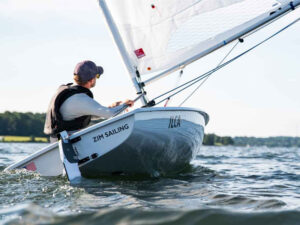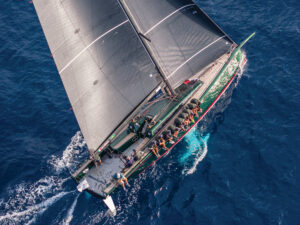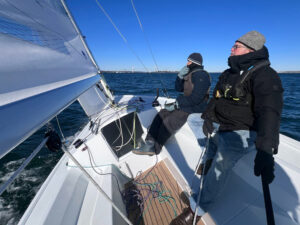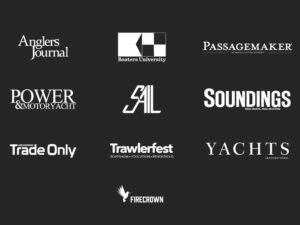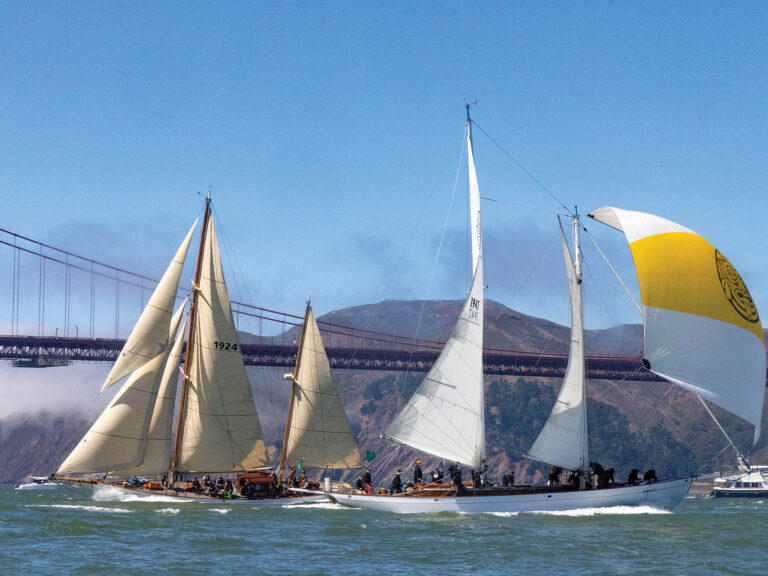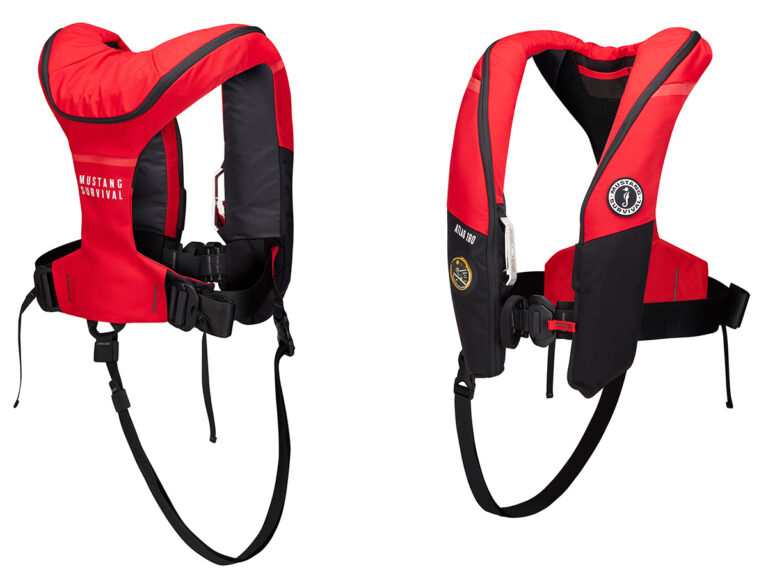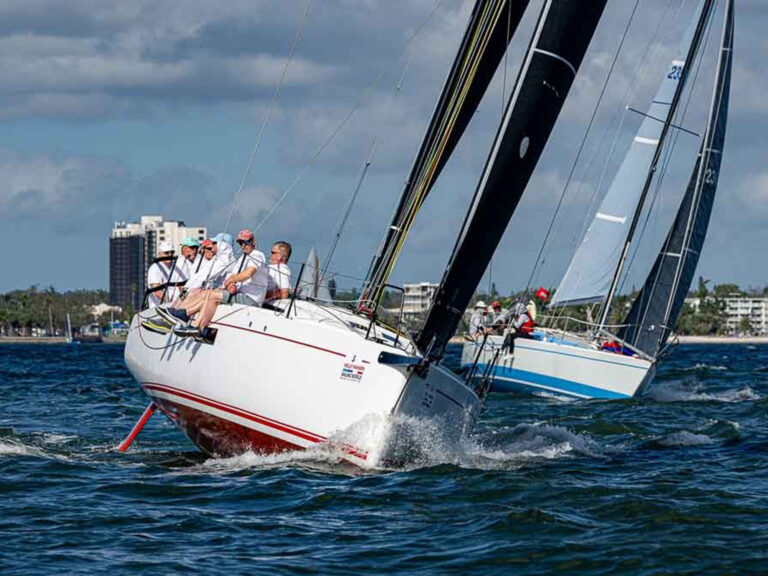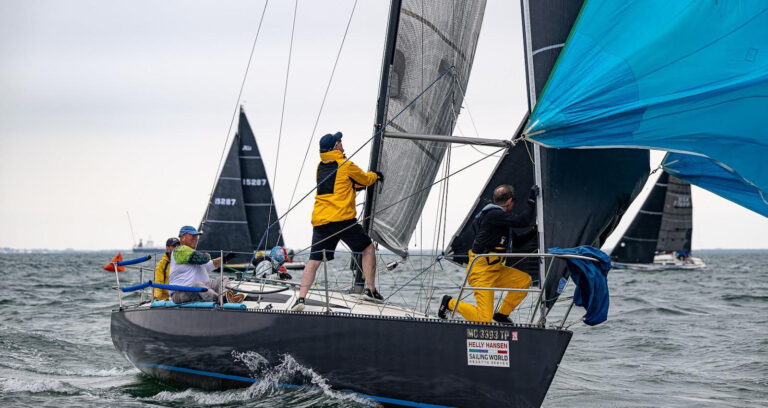After winning a string of races with the first boat, Beiley put the design in production in 1988. Widely regarded as the first sport boat, the B-25 uses marine plywood for bulkheads and ring frames, and Kevlar with epoxy over a PVC foam core for the hull, all of which means a light, stiff hull. The deck is cored with end-grain balsa, so beware of soft spots. The lifting keel allows for easy launching and retrieval. Martin 242 owners have found that outboards between 3.3 and 4 horsepower mounted on a bracket on the boat’s closed transom work well.The interior of the B-25 is simple, with a V-berth forward, and settees to port and starboard in the main cabin. The designer’s goal for the interior was to make it as light as possible, and he succeeded. The cabin sole is a teak and holly veneer over Verticell honeycomb; the weight of the components that make up the interior is around 50 pounds. Beiley, in an interview posted on his company’s website, www.bravurayachts.com, explains what he’d do different if he designed the B-25 today, it serves as a guide for those interested in buying a used B-25 and turbo-charging it for PHRF racing. “I would give it a bit more sail area, masthead kites and a bow pole,” says Beiley. The transom-hung rudder was re-designed by Beiley in 1999, and he says that almost every buyer of a used B-25 orders one of the new deeper, thinner, lighter rudders, which are made of a carbon/epoxy composite because they’re “so much better.”The B-25 has done well in mixed fleet racing around its home territories on the West Coast, but a few have shown up at Key West Race Week over the years and done well in PHRF. We saw prices from $15,000 to $25,000 for B-25s located in New Hampshire and New Jersey, but the majority are found on the West Coast.B-25LOA 25′ LWL 21′ 4″Beam 8’3″DSPL 2,000 lbs.Draft 5′ PHRF 132-138 SA/D 27.5 Years built 1988-present Designer Leif Beiley www.bravurayachts.com
